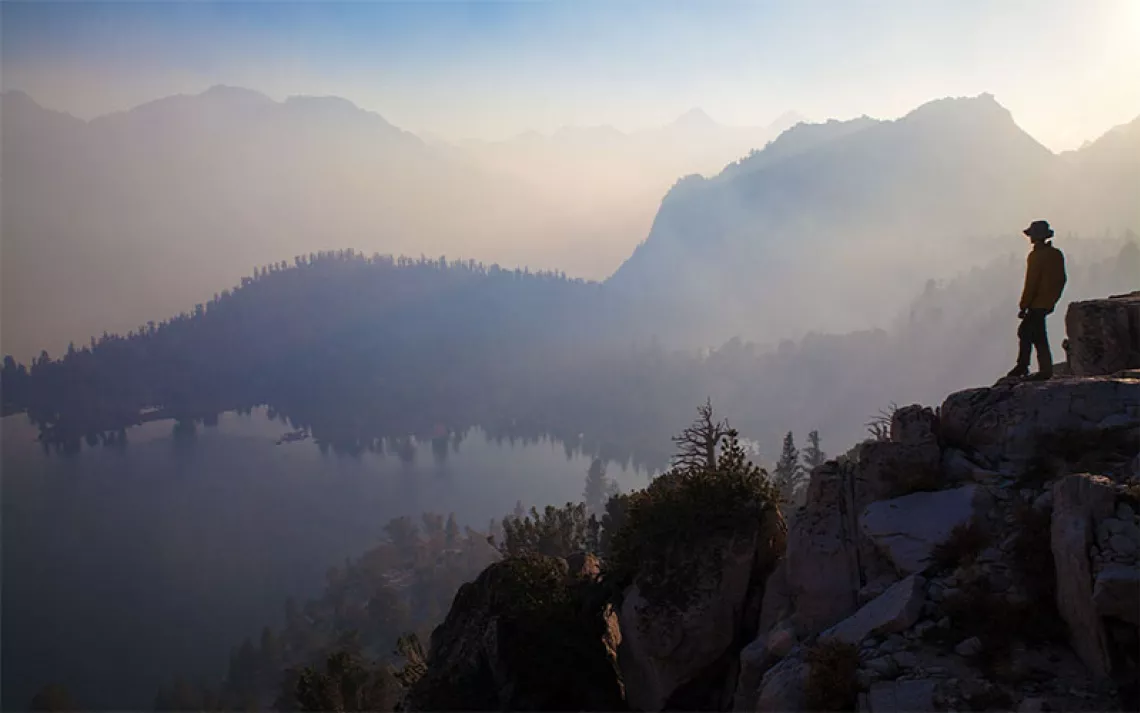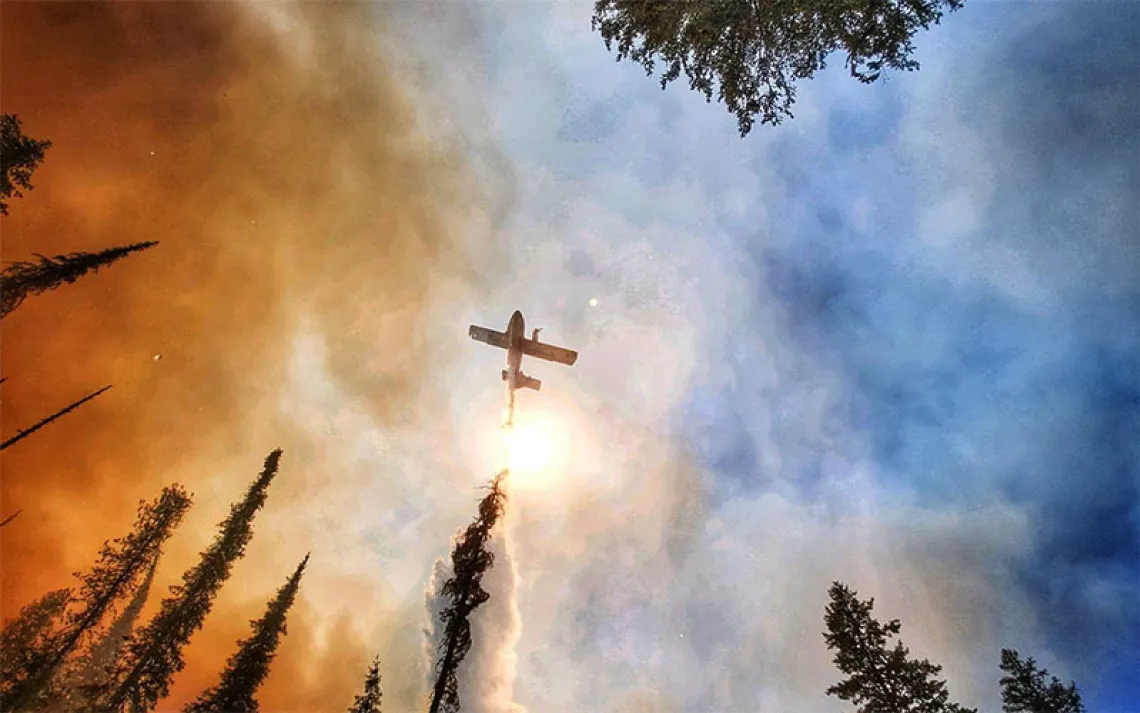The Parks' LGBTQ Pioneer
Inside one millennial’s quest to visit every single national park system site

Meyer stands atop "Vanny McVanface," his home for the duration of his 37-month journey, in a North Dakota prairie.
Photos courtesy of Mikah Meyer
A 2016 Gallup poll found that more than 10 million Americans—4.1 percent of all adults and 7.3 percent of millennials—identify as lesbian, gay, bisexual, transgender, or queer (LGBTQ). Yet only 21 states prohibit discrimination based on sexual orientation and gender identity—a statistic that can make a road trip a less-than-carefree adventure for queer Americans. Still, Mikah Meyer, who openly identifies as gay, grew up looking forward to his first independent road trip. A week before he left, however, his father unexpectedly died from cancer at 58 years old.
Still, Meyer took to the open road. “It was this incredibly transformational and healing experience,” he says. “I made a vow to do one trip every year, to honor that experience.”
Meyer had always looked up to his father. “He loved his job as a pastor, he loved his family, and he loved long road trips—something he was looking forward to doing a lot more of in retirement.” Meyer, however, didn’t want to wait that long. “Retirement is not guaranteed; [age] 50 is not guaranteed; tomorrow is not guaranteed,” he says. “So, you better make today everything you want it to be.”
Accordingly, he decided on a different approach. “I made it a goal that every five years, I would turn that annual road trip into something bigger,” he says. “That way, basically, I could sprinkle in my retirement throughout my life.”
For Meyer, “something bigger” at 25 meant spending nine months hitting iconic national parks he’d only heard about while growing up, like Joshua Tree, Yosemite, and Glacier. Meyer describes his first introduction to the national park system as revelatory. “Wow! These places are something special,” he recalls.
Now 30 years old, Meyer is in the midst of his biggest trip ever—a quest to visit all 417 national park sites, in one continuous road trip. If successful—he’s currently 100 parks deep and touring the southern continental United States—he may be the youngest person to accomplish such a journey.

Meyer visits park #45, Katahdin Woods and Waters National Monument.
Meyer, however, never doubted there were LGBTQ people who loved the parks. “I have friends personally who love to hike and do stuff.” So, he reflected on his own childhood, growing up in conservative Nebraska—and there he saw an opportunity to become a role model for queer kids like his past self, who’d dreamed of outdoorsy adventure.
“We need to do a better job of making the LGBTQ community feel welcomed there [outside],” Meyer says. “I think from our institutions, to our anecdotes, to our media, the message that is out there is not yet one of LGBTQs in the outdoors being normal. So I just realized that maybe, when somebody else Googled this—when some little queer kid would say, ‘I like to be outdoors, and I wonder if there are any gay people that do that’—I could be that person.”
Before setting off, there was also the question of money. “People call me a lazy millennial,” he says. “As much as I wish I was the trust-fund baby that people assume I am, I am paying for this entire trip after working three jobs for four years and living in a high school boys’ dormitory so I did not have to pay rent.” Meyer also sought outside sponsorship to purchase a recreational vehicle and other road trip necessities, though he says he was apprehensive approaching companies, as many of them were located in “gay-unfriendly” places. Of the more than 500 outdoor-adventure-oriented companies, individuals and organizations he contacted, a handful, he says, have supported him.
Once his resources were in place, Meyer decided his mission for his journey would be to increase LGBTQ visibility in the outdoor travel industry, and to encourage youth involvement in the national parks. He launched a multimedia website, Travel Beyond Convention, where he regularly blogs and posts photos and videos, documenting his adventure.
Meyer took off early last year, from the Washington Monument in Washington, D.C., and has since traveled to Theodore Roosevelt National Park, back through the Great Lakes region, into New England, back to D.C., and now, in search of warmer weather, into the southern states.
Among his most powerful experiences? Visiting one of the newest national park sites, declared as such by President Barack Obama just last June: The Stonewall Inn in New York City. As the only LGBTQ-oriented site, it marks the location of the 1969 riot that sparked the modern gay rights movement.
Meyer was fascinated by the impact of such a powerful designation. “Think about all the people around the country who see the NPS logo and decide that because of that, they’re going to go somewhere,” he says. “So now, we have people from the middle of Montana who are touring national park sites and being exposed to LGBTQ community history.”

Meyer takes a selfie with Allan Dailey, project manager at Stonewall National Monument (site #86).
Through traveling, Meyer says he’s deepened his connection to his father. “He just loved driving and road trips,” he says. “He always said that if he wasn’t a pastor, he would have been a trucker because there was something about the open road—he just loved it. Through the process of growing up around it, and by example, I came to really love road trips as well.”
And so, Mikah Meyer’s journey to spread his message, and honor his father’s legacy, continues.

Meyer reaches the northern terminus of the Appalachian National Scenic Trail in Maine.
What You Can Do
Discrimination Should Be Illegal: So far this year two states have passed anti-LGBTQ laws that specifically target and violate this community’s civil rights; rights that should be afforded to all of us. Love, tolerance and compassion: these are three principles that guide all of our actions, or at least they should.
 The Magazine of The Sierra Club
The Magazine of The Sierra Club



